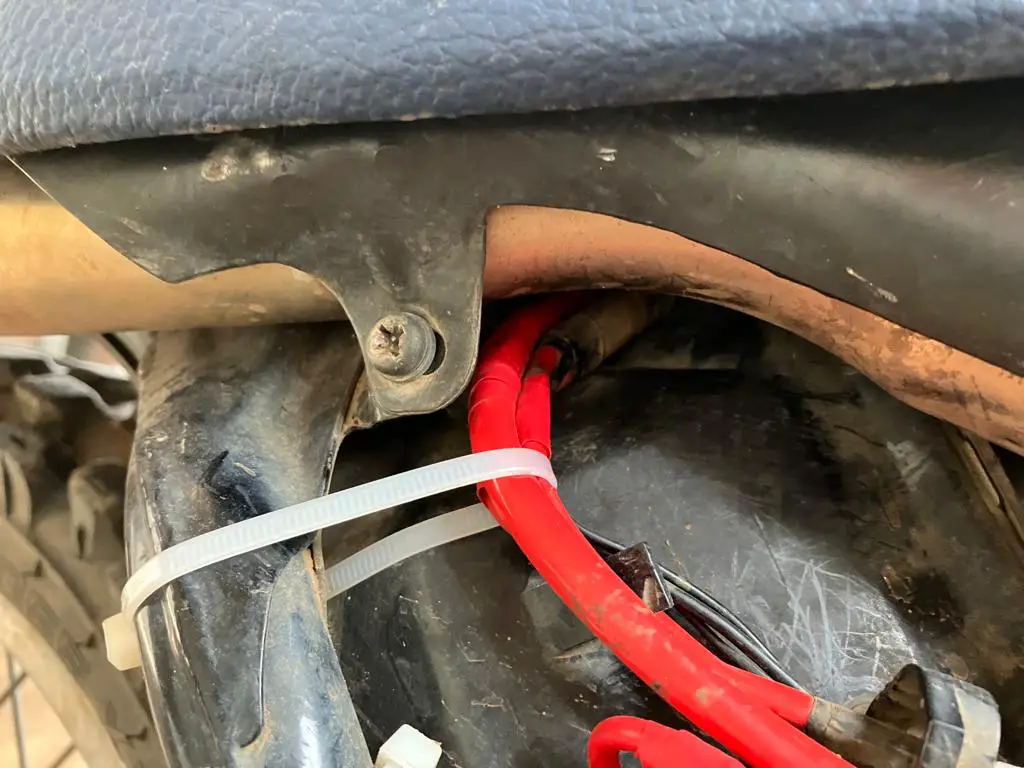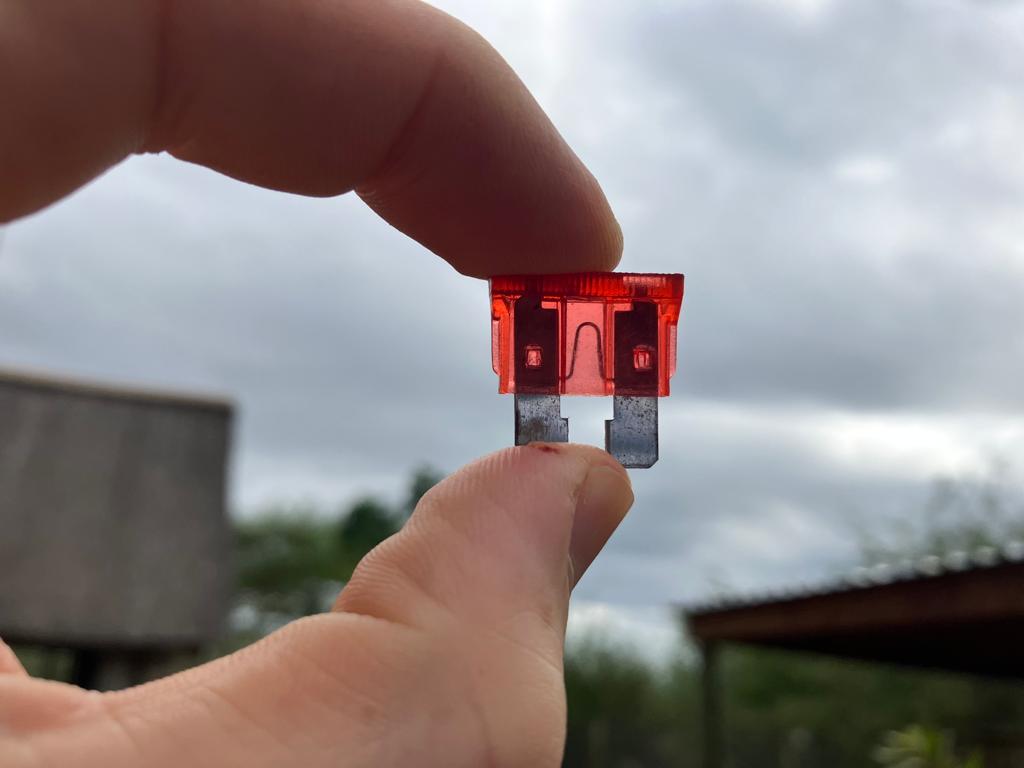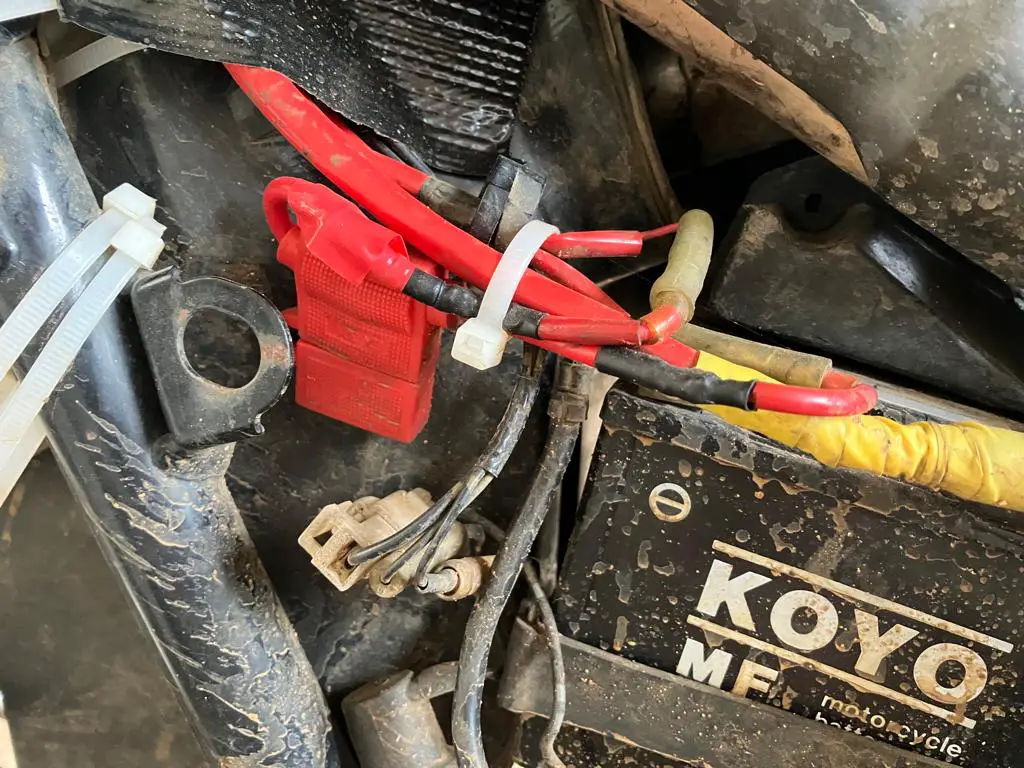A fuse that keeps blowing is probably one of the most annoying issues a motorcyclist (or motorist) can face, especially when the problem is intermittent.
A motorcycle will repeatedly blow a fuse if an exposed wire is touching the frame or another component that is ground to earth. A fuse with a too low amperage rating, or a defective electrical component may also cause a fuse to keep blowing.
There are many reasons why your motorcycling may be blowing a fuse, but stop stressing. With some patience and persistence, you can find the fault and fix the problem yourself.
Why Does My Bike Keep Blowing a Fuse?
If too much current flows through a fuse, it will blow (burn out). More on how that works and why a fuse is necessary later in this post.
So what causes too much current to flow through a circuit (and the fuse) to cause the fuse to blow?
Wrong (too low) fuse rating
Installing a fuse with a too low amperage rating will cause the fuse to blow out each time the current in the circuit exceeds the fuse’s rating. For example, if a 5A fuse is installed in a circuit that requires 10A, the fuse will blow each time 5A electrical current is exceeded.
This is, however, unlikely to be your problem, unless you know someone (or you) have recently replaced a fuse on your motorcycle. If the blown fuse problem just suddenly started out of nowhere, this is unlikely to be your problem and you need to read on.
Before you do, though, just check the fuse rating and compare it to your owner’s manual or a wiring diagram for your model of motorcycle. It it is too low for the circuit, you’ve found your problem. Replace it with the correct one and ride on.
Short to ground
The most common reason for a blown fuse is a short to ground. That’s when an exposed part of a live circuit touches a part of the motorcycle that is ground (or electrically connected) to the negative side of the battery (as is most exposed metal bits). This is also referred to as a short circuit.
What happens is the current that is supposed to flow from the battery positive, through the electrical component it is supposed to power (such as a headlight or starter motor), back to the negative terminal of the battery, now takes a short cut. The electrical current now flows straight from the postive to the negative terminal through the short circuit, bypassing the electrical component (and its internal resistance).
Non-nerds, please ignore this paragraph in blue: From school science, you may remember that Voltage = Current x Resistance (V=IR). The resistence is offered by the wire’s internal resistance (not much) and the electrical component in the circuit (more). The voltage remains more or less constant at 12ish Volts (or 5V for some sensors etc). So, the higher the resistance, the lower the current. Or more problematically, the lower the resistance (as is the case with a short circuit), the higher the current and… blown fuse!
In short, if the current is too high for the circuit to withstand, the fuse is supposed to blow thereby protecting the wiring. The most likely source of a short circuit is damaged or exposed wire insulation. This could be due to a wire chafing between two moving parts, or touching a hot exhaust and burning through the plastic sheath (ask me how I know!).

If you smell plastic and the next moment your fuse blows, follow your nose and you’ll find the short circuit.
Too much current draw
This is similar to a short circuit, but the short is inside a component instead.
If an electrical component fails, some part of it could short inside it, causing the current to bypass the internal resistance of the component and result in a current surge. This could be as simple as a postive (live) wire coming loose inside the headlight and touching the metal shroud. It could also be deep inside a starter motor where it is impossible to see without opening the motor.
I’ve even read about a case where a fuel pump was wired incorrectly (postive to negative) so that the current went straight to ground instead of through the resistance of the pump. Again, if you haven’t had work done to the fuel pump recently, this is unlikely to be the cause.
If the fuse starts blowning after a specific component was replaced, that is a good place to start looking.
Symptoms of Blown Fuse
The symptoms of a blown fuse is the same as the symptoms for a loose connection, broken wire, or a failed component. That’s why so many riders shy away from trying to diagnose or fix electrical problems. So many different issues can cause the same symptoms.
Don’t give up yet! Take a moment and make a cup of tea, then tackle it in a methodical way.
Accessory (light) not working
If an accessory, like a headlight, horn or even the ABS system, suddenlty stops working, it could be due to a blown fuse. Luckily, this is very easy to establish. Simply locate the fuse box on your motorcycle (Google it if you have to) and check the specific fuse for the component that stopped working.
In some cases, it will be clear that the fuse blew. If it still looks in tact, don’t discount it yet. Remove the fuse from the fuse block and hold it up to the light. If you are still not sure, use a multimeter like this one and test for continuity between the two spades. The ohm reading should be close to zero. If it reads “1” or No Continuity, the fuse is definitely blown.

If the fuse is still intact, there is something else that’s wrong and you’ll need to test the rest of that circuit. Or just give up now and take your bike to a mechanic.
The bike is completely dead
If you turn the key to the “ON” position and nothing happens, chances are you’ve blown a main fuse or the fuse on the ignition circuit. Again, check the fuse after consulting your owner’s manual or Google it. The main fuse usually looks a bit different than the other fuses. Look for a small square plastic box thingy.
If the fuse is blown, replace it with the correctly rated fuse and hope it doesn’t blow again. If it does, you’ll need to diagnose the cause.
IMPORTANT NOTE: If you find a fuse melted and fused to the fuse block, the problem is not with the rest of the circuit. Instead, the fuse was likely not making good contact with the fuse block or the fuse’s spades were dirty resulting in too high a resistance and overheating. You’ll have to replace the fuse block and all the fuses.
Purpose of a Fuse in an Electrical Circuit
Okay, so let’s look at what the purpose of a fuse is and how it works.
A fuse consists of two electrically conductive metal spades that are connected inside the plastic housing by a thin piece of metal. This metal piece inside the fuse is rated to burn out at a very specific amperage of electrical current.
For example, if the fuse is rated at 5A, that thin metal bit inside will melt (or blow out) when a current in excess of 5A is passes through it.
A fuse is installed in a circuit (in series) to protect the circuit and its electrical components against too high a current. If the current limit of the circuit is exceeded for some reason, the fuse will blow out first, thereby opening the electrical circuit and preventing any futher electricity to flow through it.

For example, if a circuit was designed to withstand 10 amps of electrical current (because of the compoments, and gauge or thickness of wiring used), a 7.5A or 10A fuse will be installed in the circuit. If the circuit shorts to ground due to an exposed wire for instance, and the current spikes to 15A, the fuse rated at 7.5A will blow out immediately, preventing any further damage to the rest fo the circuit.
What Should I Do if My Bike Keeps Blowing a Fuse?
Let’s say you’ve identified a fuse that keeps blowing out each time you replace it with the correctly rated fuse. One thing you should NEVER do is replace it with a fuse rated at a higher amperage. You should also NEVER bypass the fuse with a piece of wire.
Both of these ‘fixes’ will result in damage to the rest of the circuit when the current limit if the circuit is exceeded, because the fuse (or bypass) will now allow the higher current to flow freely and burn out the wires or cause a huge electrical fire!
If the correct fuse blows for a second time, you need to trace the wiring from the battery, through the fuse and the component it is powering, to the ground to earth. Somewhere, something is broken or damaged. If it is not a loose connection or exposed wire, it is likely that the electrical component is the culprit.
There are numerous videos on YouTube on how to trace a short to ground. Don’t be overwhelmed or intimidated. Take your time with a willingness to learn. The more you do it yourself, the easier it will become.
Conclusion
If your bike keeps blowing the same fuse, there is something else wrong on that specific electrical circuit.
Yes, you can replace the fuse with the correct amperage rating, but this is just a short-term fix to get you home.
The cause is most likely a short to ground and it needs to be fixed before you ride your bike again.
You CAN find the fualt yourself and fix it!
Good luck and let me know how it went at info@adventurebiketroop.com
Cheers,
Francois
